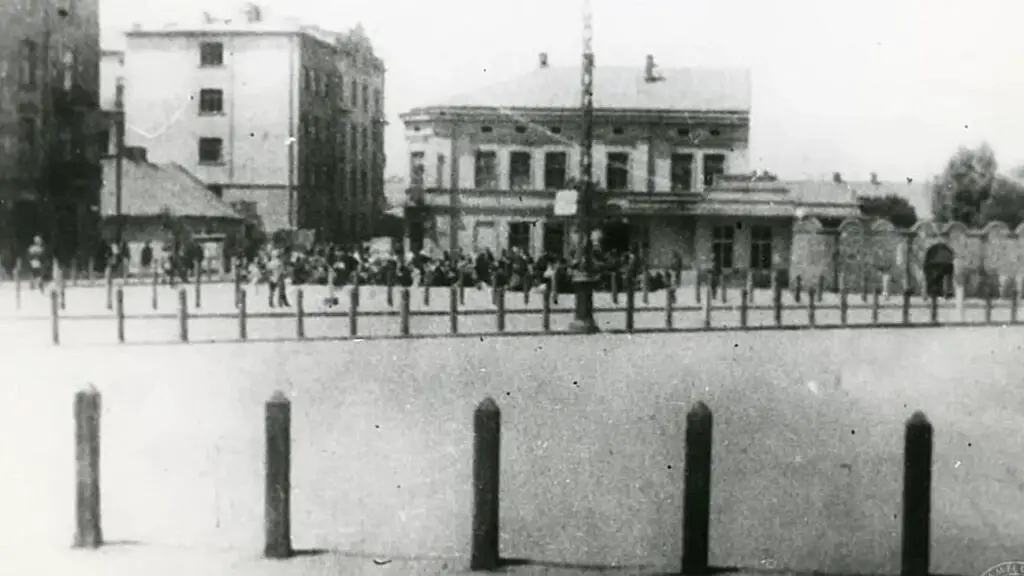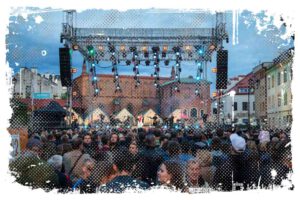Let me tell you about Kraków. The city has a unique monument Plac Bohaterów Getta (Ghetto Heroes Square), which might make you wonder – where did all these chairs come from and what do they symbolize? Here, you’ll find 70 chairs of different sizes. You can sit on most of them, but few people do. These iron chairs symbolize the tragedy of the former inhabitants of this place – Jews who were transported from here to concentration camps. The chairs are lined up, just as the ghetto residents stood during roll call.

The Story Behind the Chairs at Ghetto Square in Kraków
Ghetto Heroes Square (formerly Plac Zgody) in the Podgórze district of Kraków played a tragic role in the extermination of Jews. This place, at the heart of the ghetto, was the last stop for the residents of the Jewish district of Kraków before they were transported to concentration and extermination camps. It was here where roll calls and selections were held, and where Jews expelled from Kraków spent their time.

These events were commemorated in 2005 with a grand monument that covers the entire square. The designers were inspired by a passage from the memoirs of Tadeusz Pankiewicz, the owner of the neighbouring Pharmacy “Pod Orłem” (Eagle Pharmacy) and the only Aryan resident of the ghetto. He wrote,
On Plac Zgody, countless wardrobes, tables, cupboards, and other furniture are decaying, moved from place to place for an unknown number of times.
The Design of the Chair’s Monument
The artists placed 33 metal chair sculptures on the square, as well as 37 smaller replicas of these chairs, which anyone can sit on. These chairs symbolize the tragedy of the ghetto residents, leaving behind only their furniture and their final journey. The lined-up chair-monuments in the middle of the square are directed towards the pharmacy (except for three facing Lwowska Street, where a fragment of the ghetto wall remains). The smaller chairs surround the monument and are directed towards the center of the square.
↳ Make sure to read my guide to the most amazing places to stay in Kraków:
How to Find Best Place to Stay in Krakow Old Town – Your Guide

The brick surface of the square has a symbolic line of the ghetto wall, so that you can physically feel the moment of crossing its border, with the trembling of car wheels on the uneven ground. It is worth to say that in the building located on the square, formerly a bus station, a place for contemplation has been allocated. This small room is intended for the reflection of visitors.
Every year on the anniversary of the last selection, which took place on March 13, 1943, during the liquidation of the Kraków ghetto, the March of the Living departs from the square. So, if you want to learn about history and pay respect to the victims, this is a place you need to visit.
A Brief History of the Square and District That Led to the Monument
Now, let’s dive into the story of Pogórze district where the square is located. This district was incorporated into Kraków in 1913. Before that, it was a town with two markets. The current Plac Bohaterów Getta used to be Mały Rynek (Little Market). From the late 19th century, it was a trading hub for pigs and later for cattle too.
Here is a table with data about the Kraków Ghetto during the Holocaust:
| Information | Details |
|---|---|
| Jewish Population of Krakow, Poland | Over 15,000 Jews lived within the Krakow ghetto boundaries. |
| Establishment of the Ghetto | The Germans ordered the establishment of the ghetto in Podgorze, a southern suburb of Krakow, in early March 1941. |
| Concentration of Jews in the Ghetto | By March 21, 1941, the Germans had concentrated the remaining Jews of Krakow and thousands of Jews from other towns in the ghetto. |
| Liquidation of the Ghetto | The Krakow Ghetto was liquidated, and its inhabitants were either deported to concentration camps or killed on-site. |
| Registration Forms for Jewish Inhabitants of Kraków | Over 19,000 registration forms for the Jewish inhabitants of Kraków were created in the summer of 1940. |
| Maltreatment of Jews in the Ghetto | German officers and soldiers would seize Jews in the street and maltreat them. |

Towards the end of the 19th century, buildings began to emerge around the square. Various businesses such as a wheelwright’s workshop, several shops, pubs, a butcher’s shop, a mechanic’s workshop, and a laundry operated here. In November 1909, Józef Pankiewicz, a very important figure for this place, obtained a license to run a pharmacy at Mały Rynek 20 (currently number 18).
After Pogórze was included in Kraków, Little Market was renamed to Plac Zgody. In 1930, a bus station was established here, serving bus lines connecting Kraków with Podkarpackie towns. A station building called Karpaty was erected between 1930 and 1931.
From Square to Ghetto
On March 3, 1941, a ghetto was established in Pogórze. All non-Jewish residents were expelled from here, except Tadeusz Pankiewicz. The ghetto housed approximately 17,000 people. Plac Zgody became the center of the district, where Jewish roll calls and selections took place. The bus station building housed a police statuion, and the ghetto wall was located right next to it. The square was the main gathering place for people before their expulsion. People were gathered in the western part of the square, trucks loaded with stolen property stood in the center.

Executions took place on the square and in the courtyards adjacent to it. Only during the liquidation action on March 14, 1943, dozens of disabled, unemployed individuals, and children were shot.
These words inspired the artists from Biuro Projektów Lewicki i Łatak to create an extraordinary monument – from chairs.

References:
- https://miejscapamieci.org/miejsca/krakow-krzesla-pomniki-na-placu-bohaterow-getta/
- https://pl.wikipedia.org/wiki/Plac_Bohater%C3%B3w_Getta_w_Krakowie



